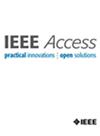Experimental Study of the Stability of a Low-Cost C-Band Active Reflector Using Sentinel-1 Imagery
IF 3.4
3区 计算机科学
Q2 COMPUTER SCIENCE, INFORMATION SYSTEMS
引用次数: 0
Abstract
The application of Synthetic Aperture Radar (SAR) interferometry (InSAR) techniques when in the imaged areas the coherence is low and persistent scatterers are missing often demands the installation of artificial reflectors, usually represented by passive corner reflectors (PCR). For missions based on C band sensors such as Sentinel-1, passive corner reflectors capable of providing a high phase accuracy are cumbersome and heavy, and their installation in hard places can be difficult and costly. The installation of active reflectors, compact and smaller with respect to passive corner reflectors, can sometimes represent a valid alternative but the use of these devices has not yet largely spread due to their high sensitivity to the seasonal temperature variation which can reduce their reliability both in amplitude and phase stability. This paper focuses on the analysis of the performance of a low-cost active reflector designed to operate with C band spaceborne radars, tested in a real field campaign using Sentinel-1 imagery. The goal is to assess through an experimental based approach the stability of this device, using data acquired during the monitoring campaign of a landslide based on InSAR. The stability of the Active Reflector (AR) installed in a stable area is analyzed to evaluate its performance when used as a reference in interferometric processing. The results of this study show a stability over a temporal lapse of almost three years equivalent in deformation measurement to a few millimeters accuracy, which can be considered a satisfactory goal for this InSAR application.求助全文
约1分钟内获得全文
求助全文
来源期刊

IEEE Access
COMPUTER SCIENCE, INFORMATION SYSTEMSENGIN-ENGINEERING, ELECTRICAL & ELECTRONIC
CiteScore
9.80
自引率
7.70%
发文量
6673
审稿时长
6 weeks
期刊介绍:
IEEE Access® is a multidisciplinary, open access (OA), applications-oriented, all-electronic archival journal that continuously presents the results of original research or development across all of IEEE''s fields of interest.
IEEE Access will publish articles that are of high interest to readers, original, technically correct, and clearly presented. Supported by author publication charges (APC), its hallmarks are a rapid peer review and publication process with open access to all readers. Unlike IEEE''s traditional Transactions or Journals, reviews are "binary", in that reviewers will either Accept or Reject an article in the form it is submitted in order to achieve rapid turnaround. Especially encouraged are submissions on:
Multidisciplinary topics, or applications-oriented articles and negative results that do not fit within the scope of IEEE''s traditional journals.
Practical articles discussing new experiments or measurement techniques, interesting solutions to engineering.
Development of new or improved fabrication or manufacturing techniques.
Reviews or survey articles of new or evolving fields oriented to assist others in understanding the new area.
 求助内容:
求助内容: 应助结果提醒方式:
应助结果提醒方式:


